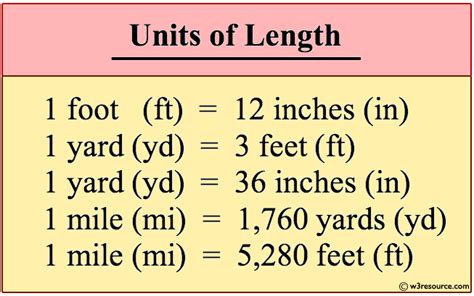How Many Ft Are In 6 Miles
Kalali
Apr 01, 2025 · 4 min read

Table of Contents
How Many Feet Are in 6 Miles? A Comprehensive Guide to Unit Conversions
Knowing how to convert units is a fundamental skill with applications in various fields, from everyday life to specialized professions. This comprehensive guide delves into the conversion of miles to feet, specifically answering the question: how many feet are in 6 miles? We'll not only provide the answer but also explore the underlying principles, offer practical examples, and equip you with the knowledge to perform similar conversions independently.
Understanding the Fundamentals: Miles and Feet
Before jumping into the calculation, let's establish a clear understanding of the units involved:
-
Miles (mi): A unit of length in the imperial and US customary systems. One mile is a significant distance, historically defined by Roman milestones.
-
Feet (ft): Another unit of length within the same systems. A foot is a much shorter distance, historically related to the average length of a human foot.
The crucial point here is the relationship between miles and feet. This relationship is fixed and allows for precise conversion.
The Conversion Factor: The Key to Accurate Calculations
The cornerstone of any unit conversion is the conversion factor. This factor represents the ratio between two units. For miles and feet, the conversion factor is:
1 mile = 5280 feet
This means that for every 1 mile, there are exactly 5280 feet. This conversion factor is crucial for all calculations involving miles and feet.
Calculating Feet in 6 Miles: A Step-by-Step Approach
Now, let's tackle the primary question: how many feet are in 6 miles? We can solve this using a simple calculation based on our conversion factor:
-
Identify the conversion factor: 1 mile = 5280 feet
-
Set up the equation: 6 miles * (5280 feet / 1 mile) = ? feet
-
Perform the calculation: 6 * 5280 = 31680 feet
Therefore, there are 31,680 feet in 6 miles.
Beyond the Calculation: Practical Applications and Real-World Examples
Understanding this conversion isn't just about solving a math problem; it has numerous real-world applications. Here are a few examples:
-
Construction and Engineering: Calculating distances for road construction, building layouts, or surveying land requires accurate unit conversions. Knowing how many feet are in a given number of miles is essential for planning and execution.
-
Mapping and Navigation: GPS systems and maps often provide distances in miles, but understanding the equivalent in feet can be crucial for precise navigation, especially in situations involving smaller-scale movements.
-
Sports and Fitness: Marathon runners, for instance, might track their training distances in miles, but converting to feet can provide a more granular understanding of their progress and pace.
-
Hiking and Outdoor Activities: Planning hiking trails or estimating distances covered during outdoor activities often involves converting miles to feet to better manage time and energy expenditure.
-
Land Measurement and Property Surveys: Accurately measuring land areas, particularly those involving smaller plots, often requires converting miles to feet for precise calculations and legal documentation.
Expanding Your Conversion Skills: Working with Other Units
Mastering the mile-to-foot conversion is a stepping stone to proficiency in other unit conversions. The same principles apply when working with other units of length, such as yards, inches, kilometers, and meters. Understanding the fundamental conversion factors is key to accurate calculations.
For example:
-
Miles to Yards: Since 1 yard = 3 feet, and 1 mile = 5280 feet, we can determine that 1 mile = 1760 yards (5280 feet / 3 feet/yard).
-
Miles to Inches: Given that 1 foot = 12 inches, we can calculate that 1 mile = 63,360 inches (5280 feet * 12 inches/foot).
Troubleshooting Common Mistakes and Avoiding Errors
While the conversion itself is straightforward, some common mistakes can lead to inaccurate results:
-
Incorrect Conversion Factor: Using the wrong conversion factor is a primary source of error. Always double-check the correct ratio between miles and feet (1 mile = 5280 feet).
-
Calculation Errors: Simple arithmetic mistakes can occur during the multiplication process. Using a calculator or checking your work is crucial to ensure accuracy.
-
Unit Inconsistency: Ensure that all units are consistent throughout the calculation. Mixing units (e.g., using miles and yards without proper conversion) will lead to incorrect results.
Advanced Applications: Working with Complex Scenarios
The principles discussed here can be extended to more complex scenarios. For example, imagine you need to determine the number of feet in a distance expressed in miles and yards or miles, yards, and feet. You would need to convert all units to a common unit (e.g., feet) before summing them up.
Conclusion: Mastering Unit Conversions for Practical Success
Understanding how to convert miles to feet is a practical skill with wide-ranging applications. By grasping the fundamental conversion factor (1 mile = 5280 feet) and applying the steps outlined in this guide, you can confidently perform these conversions and apply this knowledge to various real-world situations. Remember to always double-check your work and maintain consistency in your units to avoid errors. This ability not only improves problem-solving skills but also enhances your ability to work with quantitative data effectively across diverse fields. From construction and engineering to sports and outdoor activities, the ability to seamlessly convert units is a valuable asset.
Latest Posts
Latest Posts
-
185 Cm In Inches And Feet
Apr 03, 2025
-
What Percent Is 11 Out Of 20
Apr 03, 2025
-
A More Sustainable Form Of Managing Grasslands Is
Apr 03, 2025
-
Cuanto Es 10 Centimetros En Pulgadas
Apr 03, 2025
-
How Many Metres In 10 Yards
Apr 03, 2025
Related Post
Thank you for visiting our website which covers about How Many Ft Are In 6 Miles . We hope the information provided has been useful to you. Feel free to contact us if you have any questions or need further assistance. See you next time and don't miss to bookmark.
